Here’s a STRONG Case for Grating, Rather than Dicing Your Onions!
Since onions are indispensable to tasty dishes (well, except for those who detest onions), how about some help with how to handle them quicker and easier? Jill Nystul (www.onegoodthingbyjillee.com) recently explained why grating our onions is a much better technique than dicing them. She also gave some good tips on grating other things, so you onion-detesters might want to read on anyway.
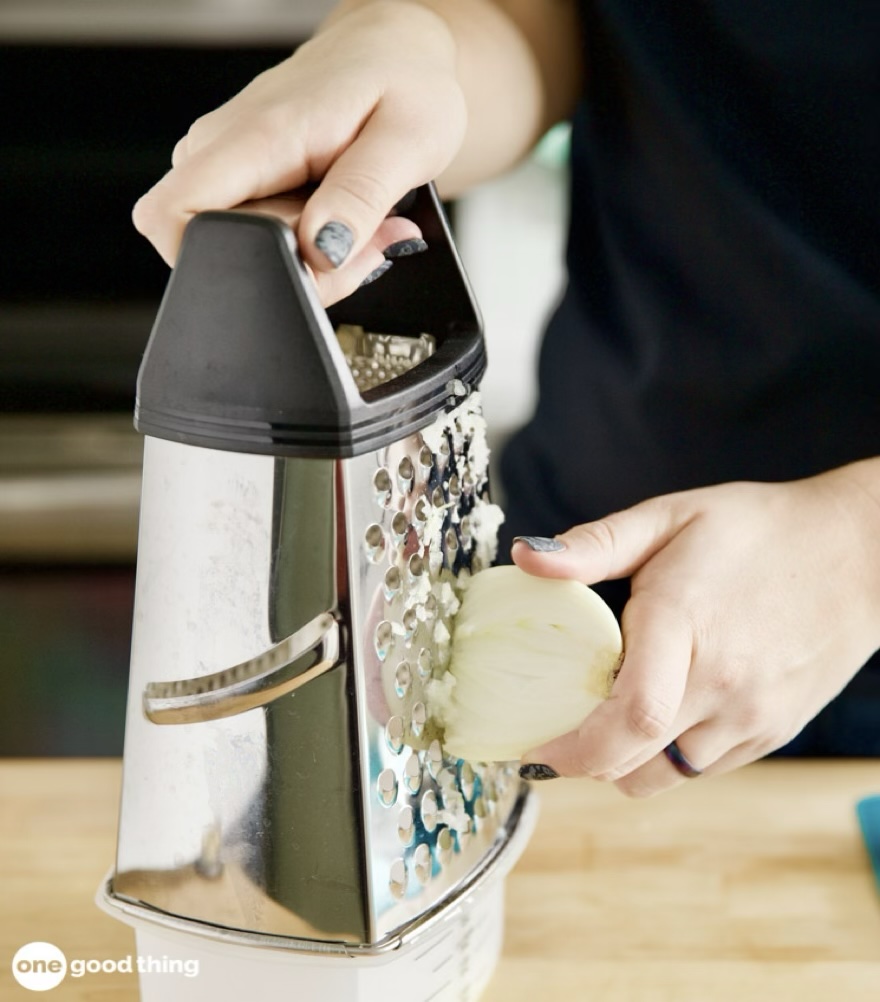
Grated onions are a bold alternative to the diced version, but they’ll save you time and effort and make cooking much easier.
Grating releases an onion’s natural oils and enzymes by breaking its cell walls and enhancing its texture and flavor. It also cooks very quickly, making it a useful shortcut when sauteeing. Grated onion will typically have a paste-like texture, due to the release of its enzymes and oils.
Besides saving you some time with prepping and cooking, why would you want to grate rather than dice your onions? They meld readily (flavor saturation); diced onions, not as quickly. And they lend a smoother texture to the finished product; diced onions, not at all.
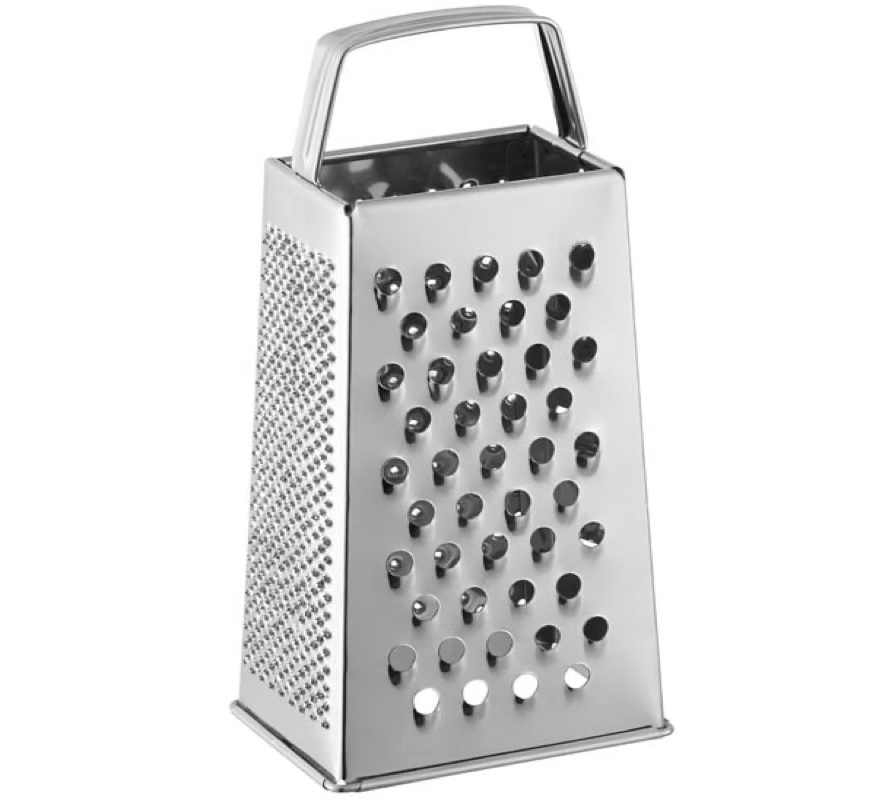
If you like this idea, then here’s what you do: peel your onion and use the largest holes on your grater box. This practice is much quicker than dicing and chopping. Also, you’ll find that because this process is so fast, your exposure to those infamously strong, tear-inducing fumes will be for a shorter duration. And another advantage: grated onion is much less easily detected by folks with picky palates.
You’ll find grated onion does wonderfully well in sauces, purees, curries, casseroles, lasagna, calzones, enchiladas, sandwich mix, pot pies, macaroni and cheese, etc.
OK, now it’s your turn, you onion-detesters. As promised above, here’s Jillee’s information on other things that grate well.
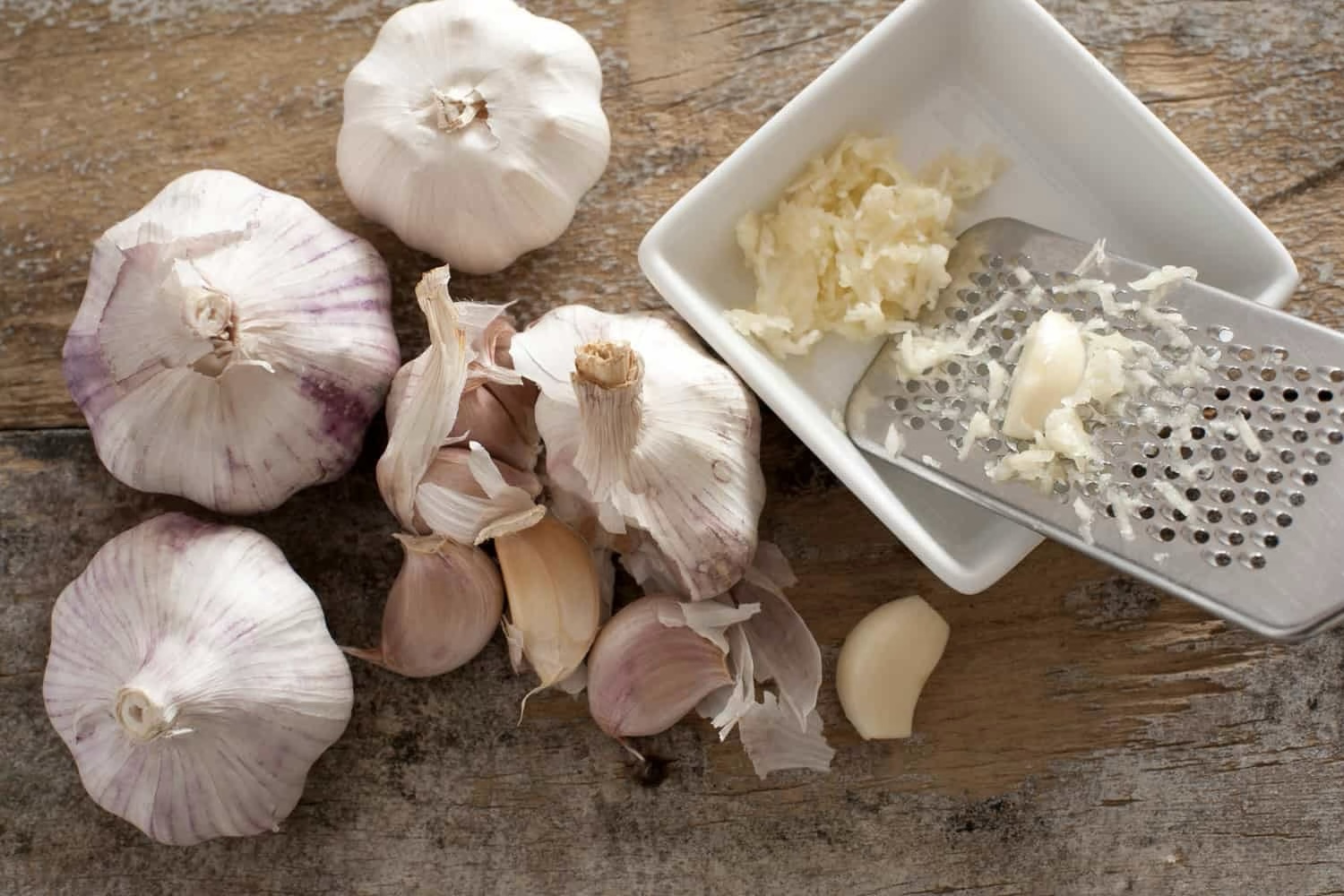
GARLIC. If you don’t have a press or aren’t very quick with a knife, grating garlic with a fine grater or micro-plane is a smart way to approximating the job a garlic press can do. And it’s much quicker than struggling with a knife. Grated garlic is great in guacamole, vinaigrettes, and other raw recipes because it eliminates the risk of biting into an oversized chunk of garlic.
POTATOES. Grated spuds turn out a much better hash brown than do diced, and in half the time.
GINGER and HORSERADISH. You know what a pain in the neck these tough roots are to mince with a kitchen knife! Grating them with a fine grater or micro-plane is so much easier and saves time, too.
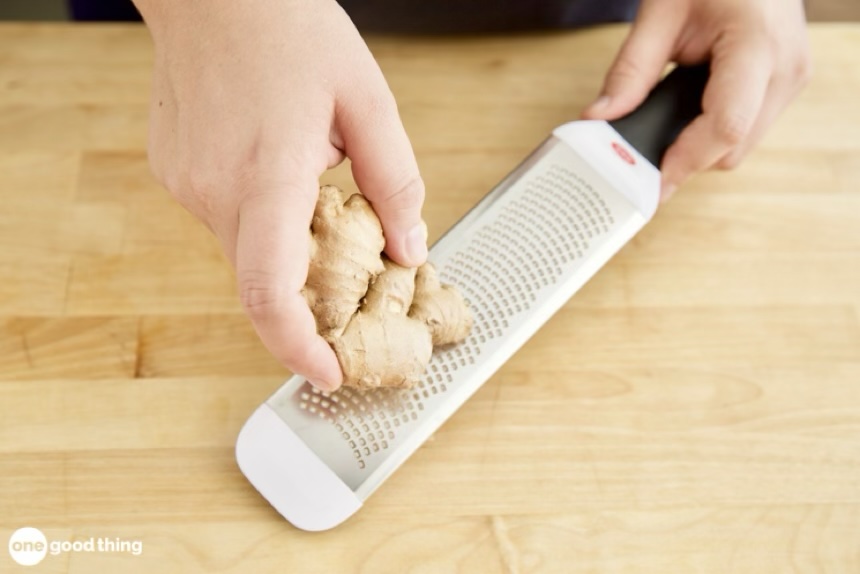
BUTTER. Certain baked goods (biscuits and scones in particular) turn out best when there are chunks of butter distributed throughout the dough. Cutting butter into your flour mixture is tedious and time-consuming; you’ll save a lot of time and effort by using grated butter instead. The trick is to quickly grate frozen butter. You’ll really appreciate how easy it is to cut this into your other ingredients.
One genius use for grated butter is to add it to your lean ground beef or turkey burgers to keep them moist.
TOASTED BREAD. For a small amount of breadcrumbs, a grater works well. It’ll do the job quickly and the clean-up is next-to-nothing.
<center>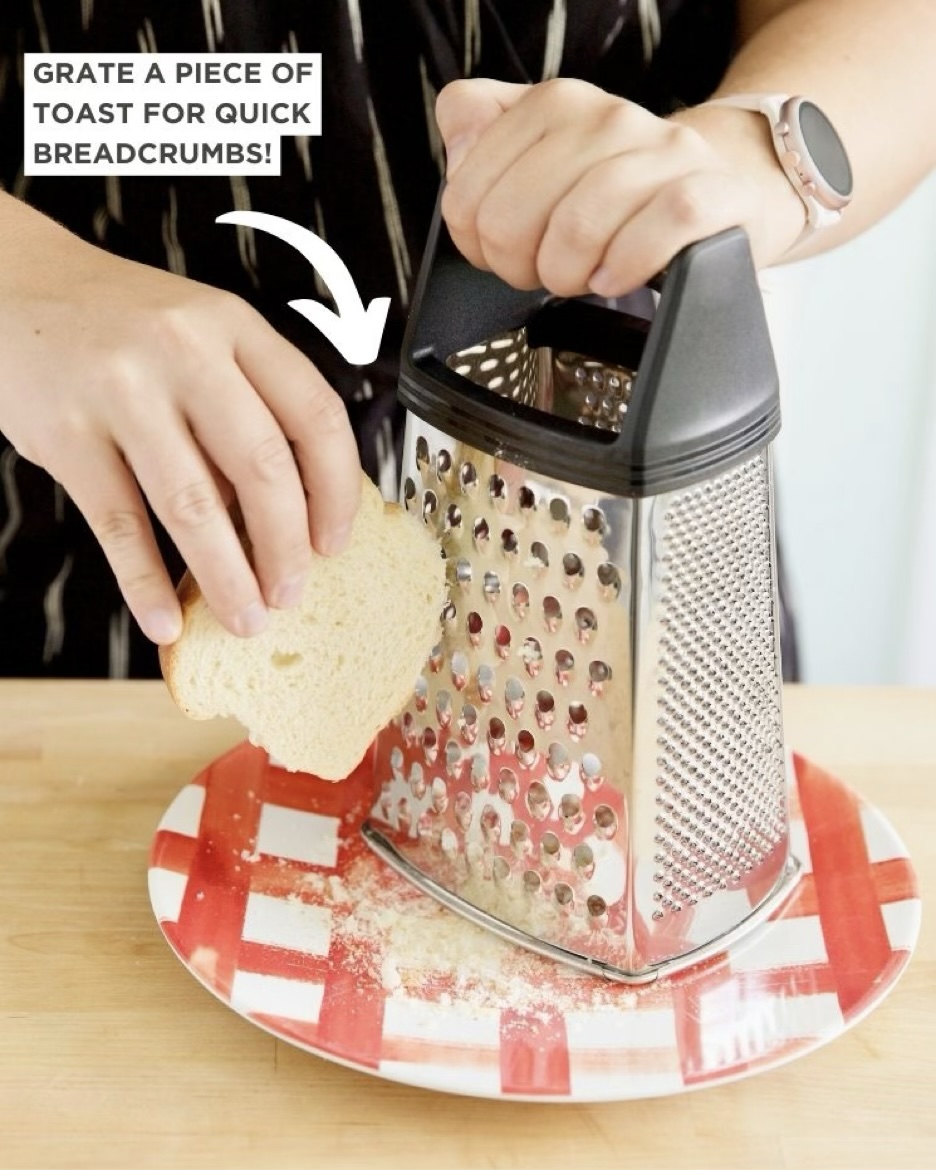
APPLES. Grated apples can flavor a batter more thoroughly than chopped apples. And they do a better job of adding moisture and a pleasant texture to baked goods.
PARAFFIN (Parowax or Gulf Wax). When a chocolate recipe calls for melting chocolate with paraffin (to keep the chocolate shine), grate the paraffin rather than chop it; it’ll melt much quicker.
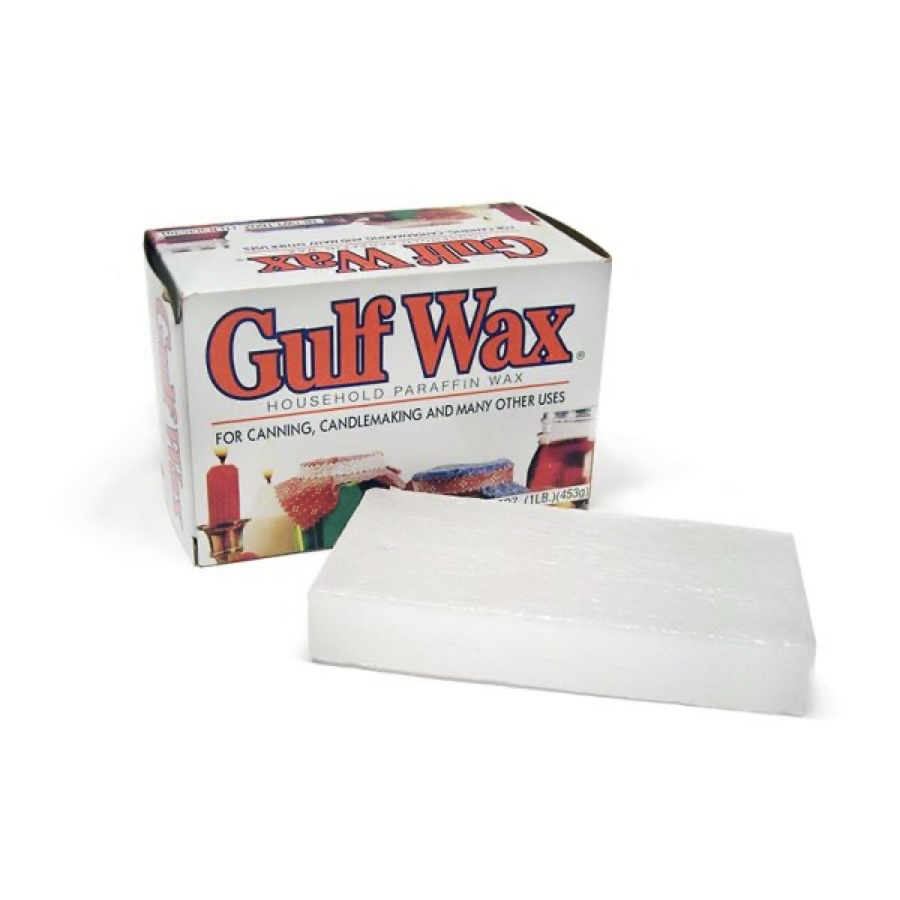
Finally, a tip regarding using a micro-plane: Turn it so that the cutting surface is on the bottom, then grate your onion, garlic or citrus etc. The “shavings” collect on the top surface, making it super easy to efficiently drop them into your bowl of ingredients!
I’ll close with Jillee’s chart on the differences between using grated and chopped onions:
Grated Onion vs. Chopped Onion

 Alice Osborne
Alice Osborne
Weekly Newsletter Contributor since 2006
Email the author! alice@dvo.com
